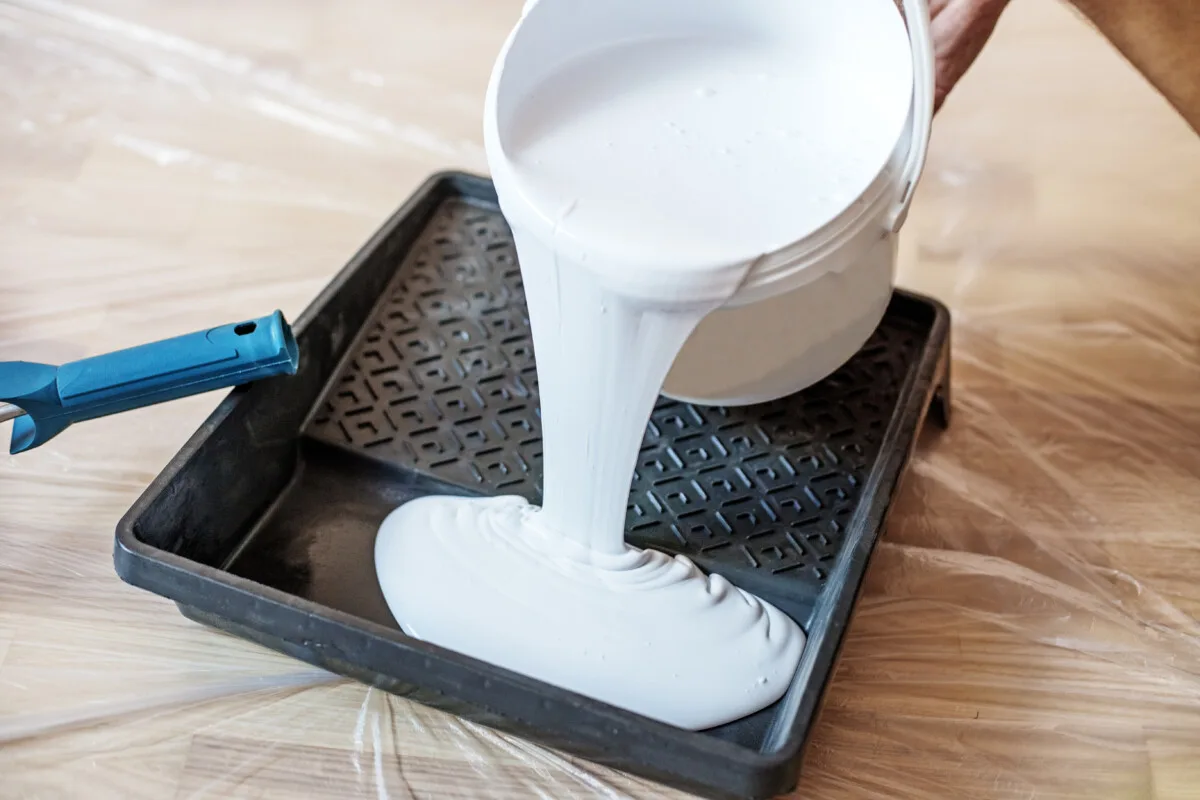Rust-Oleum enamel paint is skillfully created to shield various surfaces from the severe weather conditions that frequently exist in outdoor settings. Paints from Rust-Oleum typically work best on metals by giving them a tough and shiny protective surface.
Rust-Oleum is a trusted brand when it comes to metal paints. But can Rust-Oleum paints be used on wood or other surfaces?
Rust-Oleum paints can be used on wood surfaces and also offer added protective features to furniture and other wooden objects.
Furthermore, it can also be applied on laminate, ceramic, vinyl, porcelain tiles, and concrete. That being said, let’s dive straight into the details.
Can Rust-Oleum Protective Enamel Be Used On Wood?
Rust-Oleum protective enamel is generally made for metals, but you can paint wood with it given the wooden surface is prepared correctly. It is also better to use an oil-based Rust-Oleum solution to achieve a good result on wood.

Before painting, you should sand the wood surface to a smooth finish and use a moist towel to remove the sanding dust. Next, apply a Rust-oleum or another company’s oil-based primer once the surface has dried.
When applying paint to metal surfaces, priming is not necessary, but it is crucial when painting wood. A primer helps the paint adhere properly to the surface of the wood. As a result, the paint and primer produce a sturdy, protective layer.
What Surfaces Can You Use Rust-Oleum On?
Surfaces that have been painted, sealed, stained, or left exposed can all be treated with Rust-Oleum.
Hardwood, linoleum, laminate, vinyl, porcelain tile, concrete and ceramic are some examples of surfaces. However, Rust-Oleum’s are inappropriate for garage flooring or outdoor areas.
How To Apply Rust-Oleum Paint To Wood?
There are a few steps to applying Rust-Oleum to wood, including:
1. Set up the work area
When using paints, stains or other chemicals that might ruin the workstation, always lay down a drop cloth or plastic sheeting to protect the floor. Another common practice while painting is to cover the wood’s edges or other undesirable spots by applying painter’s tape. It will keep the edges neat and make your work appear polished.
Wearing long sleeves protective clothes can also be a good idea. Additionally, put on some hand gloves to prevent stains on your hands and consider putting on a respirator in case you are sensitive to the scent of the paint.
2. Sanding
Sanding is the first step in surface preparation. To make the wood clean and smooth to the touch, use medium-grit sandpaper.
Generally, sandpaper with a grit of 180–220 produces the best outcomes. Therefore, for your project, you may use one of these medium grit selections. Scrape the wood in the direction of the grain while remaining gentle.
3. Clean off the wood
After you’ve finished sanding, you may brush away extra wood dust with a dry paintbrush. Then, using a tack cloth or wet towel, wipe it clean to get rid of all the dirt.
If you want to use a moist rag, make sure you wring it out completely to get rid of any extra water. Since the wood being wet might unintentionally cause an increase in the grain. After washing, allow the wood to dry completely before applying primer.
4. Applying the primer
Use an oil-based primer to help the paint adhere to the wood better and provide a long-lasting, protective covering. Depending on what works best, you may apply the primer with a premium paintbrush or a paint roller.
After you’ve finished priming the wood, give it time to thoroughly dry. Typically, this should take at least three hours, and if the weather is poor, it takes longer.
5. Prepare the paint
Pigments used in paints frequently fall to the bottom of the container during storage. To provide a uniform outcome and to evenly disperse the colourant, you must mix the paint before using it.
Therefore, to create a consistent result, open the paint can and thoroughly stir it with a clean stick. If you don’t, your project can have unattractive colour blotches.
6. Apply the paint
Apply the Rust-Oleum oil-based paint to the prepped wood as soon as you’ve finished swirling it with the clean paintbrush or roller.
If you opted for the spray option, use the spray can to immediately apply a smooth coat of paint on the wood. Make sure to evenly apply paint to the whole surface of the wood. Also, keep in mind to thoroughly shake the spray can before using it.
After finishing, let the painted wood rest for at least two hours or as long as the product’s maker specifies
7. Add on additional coats of paint
It can take almost a day for the initial coat to dry. You must be patient and give it all the necessary drying time so that it may completely dry.
Check the painted wood when it has finished drying, and add more coats as required. You should typically use two to three even layers of paint for proper coverage.
Before applying a further layer, let the previous coat completely dry. You are free to use several coats as required to get the finish you desire.
Moreover, you should also think about using sandpaper to scuff-sand between layers of paint. It will also give the paint additional traction. However, prior to applying the sandpaper, let each coat dry.
Can Metal Paint Be Used On Wood?
Wood can be painted with metal paint, but it has to be primed, cleaned, and dried beforehand. Because metal paint is designed to adhere to non-porous surfaces, it has excellent adhesion and will adhere to the wood. Additionally, since wood has a porous surface, any kind of paint can adhere to it.
Wood can, however, absorb more paint than is necessary because of its porosity. Hence, to stop excessive absorption, you must treat the porous surfaces with a primer or washcoat.
Final Words on Using Rust-Oleum for Wood
In conclusion, despite Rust-Oleum being well known for its metal paints, its paints work on other surfaces as well. When applied properly to wood, Rust-Oleum produces amazing effects. However, painting on raw wood is not advised since it won’t adhere well. Only apply Rust-Oleum to wood that has already been painted or primed.


